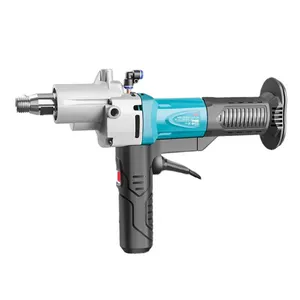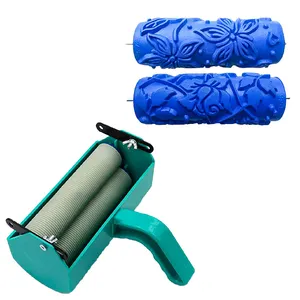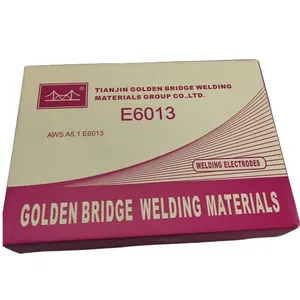Popular in your industry






























































Related Searches:













































































































Top categories
About glass drill bits for dremel
Introduction
Drilling through glass can be a daunting task, especially without the right tools and knowledge. This comprehensive guide aims to demystify the process, focusing on the use of rotary tools and the selection of appropriate glass drill bits. We delve into the basics of glass drilling, explore the different types of drill bits, and provide insights on how to choose the right one for your project. We also discuss the importance of considering the glass type and thickness, safety measures, proper use of rotary tools and drill bits, and the maintenance of your tools. This guide is designed to equip you with the knowledge to successfully drill through glass with confidence and precision.
Understanding Rotary Tools
Rotary tools are popular among hobbyists for their lightweight and user-friendly design. They are versatile, suitable for various applications around the house, studio, workbench, and workshop. A rotary tool can be gripped like a pencil for fine intricate work, especially when used with a flex shaft attachment. It's compatible with a wide range of bits, burrs, and polishers when used with a multi chuck, making it a valuable tool for different projects. Remember to choose the correct voltage and plug for your country when purchasing.
Basics of Glass Drilling
Drilling through glass requires proper tools and techniques. To start, secure the glass to a piece of plywood to prevent it from sliding. Padding the wood with a rubber sheet can reduce the risk of breakage. Mark the exact spot for the hole and use a variable-speed power drill fitted with a carbide-tipped drill bit. Lubricate the spot to lessen friction and start drilling at the lowest speed, applying light pressure. Gradually increase the hole size with wider drill bits.
Types of Glass Drill Bits
Two types of drill bits can be successfully used on glass: tungsten carbide spear-tipped drill bits and diamond-tipped drill bits. Carbide-tipped drill bits are most commonly used for non-tempered glass, ceramics, and tiles. The tip is a spade-shaped point made of super-hard tungsten carbide. Diamond or diamond-coated drill bits are even harder, preferred for working with glass and other hard but fragile materials. For specialized jobs, there are tube-shaped drill bits with a diamond coating along the cutting edge.
Diamond Drill Bits
Diamond drill bits are essential for drilling holes in various types of glass. Our Diamond Core Drills and Small Diamond Core Drills are designed to allow good water circulation, keeping them cool during the drilling process. For a wider surface area, our Small Diamond Drill Bits have a solid end. These drill bits are perfect for drilling holes in glass bottles, fused glass, sea glass, stained glass, cast glass, cold glass, or de-misting windows. Remember, these are premium quality drill bits, don't be fooled by cheaper imitations.
Carbide Drill Bits
Carbide drill bits are a popular choice for rotary tools due to their durability and precision. These bits are designed for a variety of applications, including metal and woodwork. The carbide bits are known for their longevity and ability to withstand high temperatures, making them a reliable choice for your rotary tool.
Choosing the Right Drill Bit for Your Project
Choosing the right drill bit for your project is crucial. A variable-speed power drill fitted with a 1/8-inch or 3/32-inch carbide-tipped drill bit can cut through glass effectively. As you progress, switch to the next largest carbide-tipped drill bit to achieve the desired hole size. Remember, each time you change the bit, apply less pressure to the drill. Measure the hole before moving up to the next size. This gradual increase in hole size with wider drill bits is key to successful glass drilling.
Consider the Glass Thickness
When drilling through acrylic glass, the thickness of the material plays a crucial role in choosing the right drill bit. For material thicknesses greater than 5 mm, it's recommended to regularly cool down the drill bit to prevent overheating. Thin acrylic glass sheets can be effectively drilled using conical drill bits or step drill bits. The former results in slightly conical holes, preventing chipping on the exit side, while the latter ensures clean, score-free cylindrical boreholes. Always remember to test the drilling process on a practice piece before starting on the actual sheet.
Consider the Desired Hole Size
When drilling through glass, the size of the hole you wish to create is crucial. Drill bits suitable for glass, tile, and other hard surfaces come in a variety of sizes. You can start with a small one, about ⅛-3/32-inch, for starting the holes. Then, depending on your project requirements, you can switch to larger bits. Remember, the size of the drill bit directly determines the size of the hole. Therefore, choosing the right drill bit size is essential for successful glass drilling.
Consider the Glass Type
When drilling glass, it's crucial to consider the type of glass you're working with. Regular plate, or annealed glass, can be drilled safely with the right precautions. However, tempered or safety glass is designed to shatter on impact and should never be drilled. You can differentiate between tempered and annealed glass through certain tests. Always ensure you're using the correct drill bit for the type of glass you're working with to avoid damage or breakage.
Safety Measures When Drilling Glass
When drilling glass, safety is paramount. Secure the glass to prevent it from sliding. If working on a flat surface, use a cushioned surface or rubber pad. For round objects, use a clamp or a vise. Always wear personal protective equipment when drilling. It's also important to practice on similar glass before starting your main project. However, never attempt to drill through tempered or safety glass as it's designed to shatter on impact.
Proper Use of Rotary Tools and Drill Bits
Using a rotary tool to drill glass requires careful preparation and execution. Mark the area to be drilled and cover it with clear packing tape for protection. Apply soap to the area and the diamond drill bit to reduce friction. Begin drilling slowly, applying minimal pressure, and let the bit work its way through the glass. Take breaks to cool the glass with cold water and prevent cracking. After drilling, remove the tape, smooth any rough edges with fine grit sandpaper, and clean the glass for a polished finish.
Maintenance and Care for Your Drill Bits
Maintaining your drill bits, including those used for glass drilling with a rotary tool, is crucial for their longevity and performance. Regular sharpening helps maintain their precise edges, which can be done using a drill sharpener, a grindstone jig, or an oilstone. Dull bits can make your tasks more difficult and even cause accidents. As you sharpen a drill bit, it's important to maintain the angle to ensure proper performance post-sharpening. This process requires practice but is worth learning to maintain your tools' performance.
Conclusion
In conclusion, drilling through glass requires careful selection of the right drill bits, proper understanding of the rotary tool, and adherence to safety measures. Whether you're using diamond or carbide drill bits, considering the glass type, thickness, and desired hole size is crucial. Remember to secure the glass, start drilling at the lowest speed, and gradually increase the hole size with wider drill bits. Regular maintenance of your drill bits ensures their longevity and performance. With these insights, you're now equipped to undertake your glass drilling projects with confidence and precision. Remember, practice makes perfect, so don't be afraid to test your skills on a practice piece before starting on your main project.








































